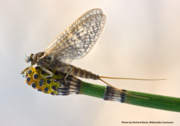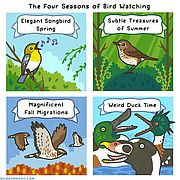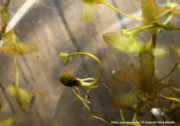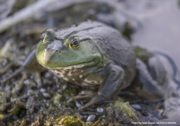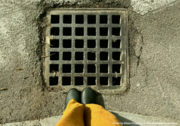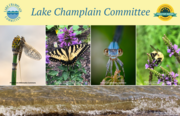Read on to see what LCC and Lake Champlain have been up to lately! Read...
News from Selected Month
Stormwater runoff poses a major challenge for water quality in Lake Champlain. When rain falls on impervious surfaces, it does not have the chance to infiltrate into the ground and instead flows over roofs, parking lots, and roads—collecting pollutants and nutrients along the way—until it eventually reaches the lake, untreated. Runoff from developed land contributes more phosphorus to Lake Champlain than any other land use type per area. Read...
For about as long as we have had agriculture, we have had agricultural pests—insects and other creatures who make their living off food we grow. We’ve been in an evolutionary showdown with these pests for centuries, adapting new technologies to better protect our food. The stakes of the back and forth increased dramatically with the advent of chemical pesticides. In the 1980’s, a specific class of pesticide was developed called neonicotinoids, or “neonics”. Read...
The changing of the seasons in the Lake Champlain Basin brings new wonders to the avian world. Cartoonist, writer, avid birder, and graduate of the University of Vermont’s Field Naturalist Program Rosemary Mosco broke down the four seasons of bird watching in the Northeast US: Elegant Songbird Spring, Subtle Treasures of Summer, Magnificent Fall Migrations, and the season we are now in—Weird Duck Time. Read...
While the winter of 2024 has been unseasonably warm, we still needed to turn on the heat and don extra layers to adjust to the seasonal change. But what about the lake’s vegetative life? How have the native aquatic plants of Lake Champlain evolved to survive winter? Read...
American bullfrogs (Lithobates catesbeianus) are deeply associated with spring and summer–their deep “jug-o-rum” serenade evokes images of hot summer nights: fireflies, and leafed-out trees. But what are they up to during cooler times? As with all living things in the Lake Champlain region, bullfrogs need to adapt to the winter season, and as aquatic amphibians, many do this in the lake itself. Read...
Sincere thanks to our wonderful team of cyanobacteria monitors and partner organizations for diligently checking Lake Champlain and inland lake locations during the 2023 season. Monitors collectively filed nearly 3,000 reports over a 19-week period. Read...
We don’t often give surface water much thought on its journey after it enters a storm drain–out of sight, out of mind. But the health of the waters going through storm drains is intrinsically tied to the health of all of our waters. It’s a common misconception that storm drains usually lead to wastewater treatment plants. In reality, most of this water is directly discharged into nearby waterbodies, and in the Lake Champlain basin, that means it eventually winds up in the lake. Read...
LCC Action Alert - ask your state rep. to support H.706 to protect ecosystems from neonic pesticides
LCC is working with a coalition of partners in support of Vermont legislation to protect pollinators and water ecosystems by dramatically curtailing the use of “neonics”. H.706 would phase out up to 90% of neonics over the course of the next five years, with certain emergency exemptions for farmers. Help get this bill passed by contacting your state reps today and asking them to support H.706. Read...



